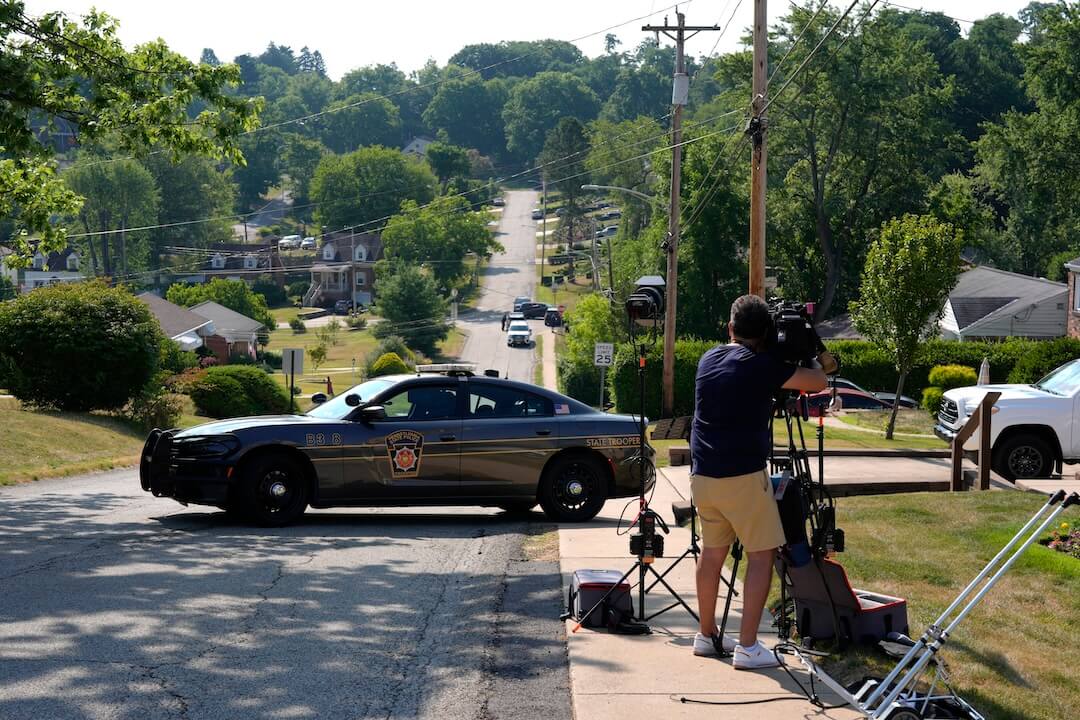Taken together, this year’s Pulitzer Prize stories were great. Their leads, not so much.
This opinion reflects a bias, a preference for shorter leads, even for longer stories. But doesn’t a long narrative or investigation require a longer lead?
I call to the witness stand Herman Melville: “Call me Ishmael.” And Ralph Ellison: “I am an invisible man.”
Once again, I find myself sifting through the Pulitzer Prize stories looking for that golden lead. Think of it as a spinoff contest: Best Pulitzer Lead (or “lede,” if you insist).
No trophy or cash accompanies this prize, only bragging rights, and the opportunity to buy me coffee if you are ever passing through St. Petersburg, Florida.
In past years, I have listed some judging criteria, but have now thrown them out.
No longer will Best Pulitzer Lead be limited to a single writer, or the first story in a series, or a winner rather than a finalist. I read as much as I could from every story available on the Pulitzer website. Sorry, but if I could not make it past your paywall after several tries, you were out.
One big difference among the winners this year, an evolving trend, is that not a single Pulitzer Prize went to a metropolitan daily newspaper in cities like Denver, Dallas or Detroit (and that just covers the Ds!).
In years past, traditional regional newspapers had great writing that won them many prizes. The style and approach to writing and storytelling differed from magazines, and even from some of the largest dailies with the greatest news resources.
It should be no surprise, then, where many of the big prizes are going these days. The New York Times, The Washington Post, The Wall Street Journal, The Atlantic and The New Yorker have the most resources, attract the best practitioners and launch the most impactful investigations.
Even a brief review of 2024 winners reveals that stories are long, long and longer, and in several cases deep, deep and deeper. One result is that leads are growing in length, or being delayed if not buried, and you’d need to hire a clever squirrel to find a nut paragraph.
When I arrived at the St. Pete Times as a writing coach in 1977, I ran into arguments in the newsroom about what constituted a reliable lead. For some, it meant the traditional top of a pyramid of information. Be direct. Don’t waste the reader’s time.
Others favored an opening anecdote followed by a sentence or paragraph that described what that little story meant. Done well, these anecdotal leads still can draw readers in and point them in the right direction. (A common problem with the anecdotal lead, it must be noted, is the way the character or story that charmed us at the top never appears again — a kind of narrative bait and switch.)
By expressing my general disaffection for long leads, even dramatic ones, I do not mean to disparage the worthiness of any of the honored stories. Let’s take, for example, the opening (I won’t call it a lead) of a Pulitzer finalist in Explanatory Journalism created by a collaboration between The Texas Tribune and Pro Publica. With almost X-ray vision, we see the plight of children threatened by a mass shooter at an elementary school.
The byline credits Lomi Kriel, Lexi Churchill, and Jinitzail Hernandez.
The children hid. They dropped to the floor, crouching under desks and countertops, far from the windows. They lined up against the walls, avoiding the elementary school doors that separated them from a mass shooter about a decade older than them. Some held up the blunted scissors that they often used to cut shapes as they prepared to fight. A few grabbed bloodied phones and dialed 911. And as students across the country have been instructed for years, they remained quiet, impossibly quiet. At times, they hushed classmates who screamed in agony from the bullets that tore through their small bodies.
Then, they waited. Waited for the adults, whom they could hear in the hallway. If they were just patient, those adults would save them.
Hundreds of law enforcement officers descended on Robb Elementary School in Uvalde, that day in May 2022. They, too, waited. They waited for someone, anyone, to tell them what to do. They waited for the right keys and specialized equipment to open doors. They waited out of fear that the lack of ballistic shields and flash-bangs would leave them vulnerable against the power of an AR-15-style rifle. Most astonishingly, they waited for the children’s cries to confirm that people were still alive inside the classrooms.
This is a stunning recreation of events, using a remarkable parallel structure, of kids who knew what to do, and adults who did not have a clue.
As a reader, I have less patience than ever with important information delivered in long paragraphs, especially at the top of the story. Long paragraphs prevent white space from showing, and send a secret message to readers that the content will be hard to get through.
It is enlightening to contrast that narrative approach to one that is more direct. It comes from a news organization I had never heard of (my bad), Mississippi Today. The work was a finalist in the category of Local Reporting.
The byline credits Brian Howey and Nate Rosenfield:
For nearly two decades, a loose band of sheriff’s deputies roamed impoverished neighborhoods across a central Mississippi county, meting out their own version of justice.
Narcotics detectives and patrol officers, some who called themselves the Goon Squad, barged into homes in the middle of the night, accusing people inside of dealing drugs. Then they handcuffed or held them at gunpoint and tortured them into confessing or providing information, according to dozens of people who say they endured or witnessed the assaults.
This approach is the opposite of the anecdotal lead. Some call it a summary lead. When a story begins with an anecdote, the reader asks, “Why am I reading this?” or, “Tell me what this means,” or, “Why is it significant?” When a story begins with a summary, the reader says, “Show me the evidence” or, “Give me an example.”
With these two examples earning honorable mention, I am ready to crown the winner of the 2024 Best Pulitzer Lead competition. Once again, it comes from a news organization I had never heard of: The Daily Sun, serving the Villages, a community in central Florida.
Cheers to Curt Hills, Cody Hills and David Corder for their coverage of a county government that blew it in preparing the community for the approach of a killer storm. It was another finalist for Local Reporting. Here is the lead:
Robert and Ilonka Knes, 81 and 82, weren’t ready to run.
That’s it. Two names, two numbers, two uses of “and” with the most powerful phrase at the end, where all readers can see it: “weren’t ready to run.” A good lead is only as good as the story or report that supports it. Let’s take a look at what comes next.
With less than 48 hours to Hurricane Ian’s landfall, Lee County’s schools were still open and its shelters were still closed.
Despite the mandatory exodus underway in neighboring counties, there were no evacuation orders here.
Not even for the Kneses’ neighborhood of 60-year-old, single-story bungalows just blocks from the ocean.
The next day, officials admitted they were wrong. Ian’s bull’s-eye soon zeroed in on the Kneses’ beach. But where were two octogenarians supposed to go now?
That lead turns into what Pulitzer winner Tom French calls a “story engine,” a question that only the story can answer: Who is the murderer? Guilty or not guilty? Dead or alive? An old married couple afraid of an oncoming monster hurricane, with no idea of where to go or what to do … what will happen to them? And why does it matter? Check out what happens next.
So for hours, the couple cowered in their 1,400-square-foot home as Ian battered it with a brutality that blew out all the doors and windows. Then, 14-foot-high walls of water freight-trained through their home and swallowed them both.
The violence swept Ilonka away to depths so impassable that her body remained hidden for 97 days. And it buried Robert’s body in his yard, pinned so deeply under his neighbor’s roof that it took a week to find it. His body was identifiable only by his pacemaker. And he was wearing an inflatable life vest.
A short evocative lead is followed by a gripping narrative that supports it, followed now by what passes as a nut sentence:
During the most powerful hurricane in Florida history, the highest price was paid by the people who needed help the most.
Perhaps this annual dissertation on the effective lead finds me repeating myself. As the shape of news delivery continues to change, perhaps even the idea of a lead feels obsolete in some circles. In the era of sophisticated data visualizations, readers may find online titles and subtitles, at times animated, photographic captions, blurbs and drop-quotes, some that fade in and out like a dream sequence. There is a lot to catch your attention, even before you get to the first sentence of text.
But consider our behavior in bookstores, or at least mine. I visit my favorites at least three times a week. If I am just browsing, I look for a random book cover that catches my eye, especially if it has a compelling title. I pick up the book and feel it. I check the number of pages. I often read a plot summary on the back. I might notice a blurb or two. Then I open to page one and read the first line: “It was a queer, sultry summer, the summer they electrocuted the Rosenbergs, and I didn’t know what I was doing in New York.” I remember the exact moment I read that opening by Sylvia Plath in “The Bell Jar.” Cha-ching! Sold.
I happen to be writing a book with the title “Writing Tools for the College Essay.” High school students can use a strong personal essay to help get them into the college of their choice. It is a powerful genre — 300 to 600 words — with high stakes. A chapter is devoted to grabbing the reader by the throat, a cliché and a violent one at that, but a perfect description of how one essay can stand apart from hundreds of others.
My next-door neighbor, Charley, shared her essay with me, and when I read it, I easily understood how it did the job. This young writer happens to be not a pterodactyl, but polydactyl, which means she was born with an extra toe. Her lead describes how Ernest Hemingway took a white cat, Snow White, with an extra toe to Key West, where colonies of such creatures now thrive. Brainy, for sure, but imagine she had written this lead instead: “I was born on Valentine’s Day with eleven toes.” Could you resist that story?
In conclusion:
- In writing a lead, you have many choices. The GOAT of writing coaches, Donald Murray, said that writers should write five leads for every story. You can then choose the one that reflects the point of the story and attracts the interest of readers.
- After you have written your long lead, try writing a short one. A long story, even a deep investigation, can have a short lead: “Jewelry work in Rhode Island is life at the bottom of industrial America.”
- The lead does not have to be the first thing you write. It can be the last. Readers won’t know the difference.
- An anecdote at the top usually requires a nut statement next: a reason to keep reading the story.
- An opening anecdote works best if that character, action, or setting recurs.
- The nut does not always require a full paragraph. Depending on the scope of the story, it can be a nut word, nut phrase, nut sentence, nut paragraph, even, as Chip Scanlan says, a nut zone.







